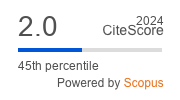Applying physical science techniques and CERN technology to an unsolved problem in radiation treatment for cancer: the multidisciplinary ‘VoxTox’ research programme
DOI:
https://doi.org/10.23726/cij.2017.457Keywords:
Multidisciplinary, physical sciences, radiation toxicity.Abstract
The VoxTox research programme has applied expertise from the physical sciences to the problem of radiotherapy toxicity, bringing together expertise from engineering, mathematics, high energy physics (including the Large Hadron Collider), medical physics and radiation oncology. In our initial cohort of 109 men treated with curative radiotherapy for prostate cancer, daily image guidance computed tomography (CT) scans have been used to calculate delivered dose to the rectum, as distinct from planned dose, using an automated approach. Clinical toxicity data have been collected, allowing us to address the hypothesis that delivered dose provides a better predictor of toxicity than planned dose.Downloads
Published
How to Cite
Issue
Section
License
Authors who publish with this journal agree to the following terms:
- Authors retain copyright and grant the journal right of first publication with the work simultaneously licensed under a Creative Commons Attribution License that allows others to share the work with an acknowledgement of the work's authorship and initial publication in this journal.
- Authors are able to enter into separate, additional contractual arrangements for the non-exclusive distribution of the journal's published version of the work (e.g., post it to an institutional repository or publish it in a book), with an acknowledgement of its initial publication in this journal.
- Authors are permitted and encouraged to post their work online (e.g., in institutional repositories or on their website) prior to and during the submission process, as it can lead to productive exchanges, as well as earlier and greater citation of published work (See The Effect of Open Access).


